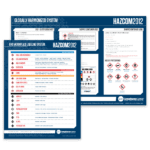This post was originally published in March 2016 and has been updated in February 2022 for accuracy.

Fainting, or syncope in medical terms, is when someone loses consciousness for a short period of time usually caused by an insufficient supply of oxygen to the brain. In movies and television though, we are lead to believe that fainting can occur for a variety of non-medical reasons mainly emotional ones. One example is where a female character meets a monster for the first time and is so overcome with fear that she faints. For effect, she usually faints into the arms of the monster. Soap Operas are notorious for the next example. There are many scenes where the lead character is presented with horrible news and as a result faints due to the extreme emotion the news triggers. Another one used quite often by the entertainment industry is when a character faints at the sight of blood. Take a look here at Dr. Sheldon Cooper from “The Big Bang Theory” passing out from cutting his thumb.
What is interesting about that clip is Dr. Amy Farrah Fowler would have to list this as a recordable case on the OSHA Log of Work-related Injuries and Illnesses. In November of 2015 OSHA posted in a Letter of Interpretation that fainting at the sight of blood is a recordable event. The scenario as outlined in the letter involves a worker scratching his finger on a clamp. As a co-worker began to apply a bandage to the scratch the injured worker saw the small amount of blood on his skin. At this point he became light-headed and fainted. Once conscious again the injured employee revealed it was the sight of the blood on his skin that caused him to faint.
Section 1904.5(a) in OSHA tells us that the employer:
“must consider an injury or illness to be work-related if an event or exposure in the work environment either caused or contributed to the resulting condition or significantly aggravated a pre-existing injury or illness. Work-relatedness is presumed for injuries and illnesses resulting from events or exposures occurring in the work environment, unless an exception in § 1904.5(b)(2) specifically applies.”
For this case, the fainting was a result of a work-related event or exposure – the blood on the skin. The exception 1904.5(b)(2) does not apply because the fainting did not result from a personal health condition such as epilepsy, narcolepsy or other conditions that could cause that result.
What makes this event recordable is Section 1904.7(b)(1)(v) which states “a work-related injury or illness must be recorded if it results in loss of consciousness.” Since the injured employee did lose consciousness, this section applies and therefore the incident must be recorded.
This blog is but a brief summary of the case. A read through the actual letter of interpretation is recommended. For a link to the actual letter, click here.
Overall, Hollywood has taken liberties with the portrayal of fainting but there is no denying that a loss of consciousness is serious and now reportable.
Stay up to date and sign up for our newsletter!
We have all the products, services and training you need to ensure your staff is properly trained and informed.
 GHS Supervisor/Manager Training Within OSHA – Online Training |
 Emergency Response / First Aid Signs |
 GHS (Workplace) Posters & Charts |





